My Scoliosis Journey: How Choosing to Undergo Surgery at Age 57 Changed My Life
After turning to Och Spine at NewYork-Presbyterian to address her painful condition, Karen McMahon is embracing an active, pain-free life and looking forward to the future.
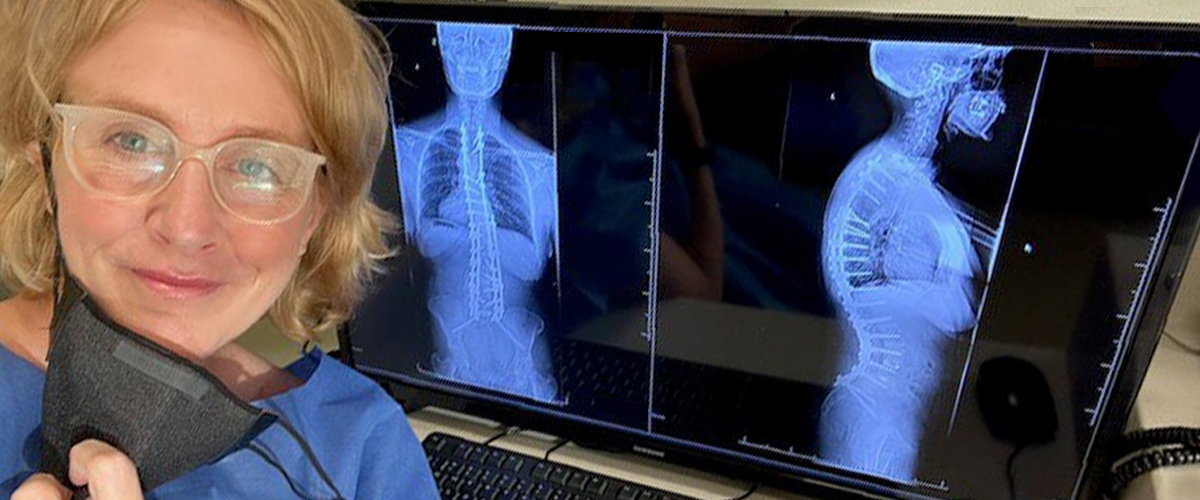

I didn’t know I had a spine problem until I was 10. I remember putting on a bathing suit before going to the pool and stopping in front of a full-length mirror. I had never noticed that my hips were different levels. I asked my mom about this, but as one of six kids, pool days were chaotic and I remember her saying, “It’s probably just the way you’re growing. Don’t worry about it for now.” So I didn’t.
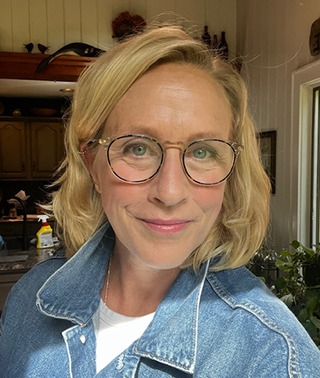
Karen McMahon
Two years later, my school nurse conducted my first ever scoliosis screen in her office and made note of my scoliosis. A letter went home to my parents and the test was repeated by my pediatrician. I was referred to a specialist who gave me exercises to do at home, mostly core strengthening and floor exercises. I was athletic and strong and loved sports, so I did the exercises with the idea that it was going to stop the progression of my scoliosis. A year later we found out that it had gotten worse and that I would need to wear a brace to stop any further deformity.
After I was fitted for a brace, I couldn’t sit in the car on the way home. I had to lay down in the back seat, and the brace immediately started cutting into my right hip. All sports stopped because I had to wear the brace 22 hours a day. The brace became part of the family and as such, we agreed to name her “Beatrice.” She was a big presence for many years to come.
In seventh grade, my doctors allowed me to join the swim team, and by the time I was 16, I was allowed to return to playing team sports, which was a big deal for me. At 18, bracing was completed.
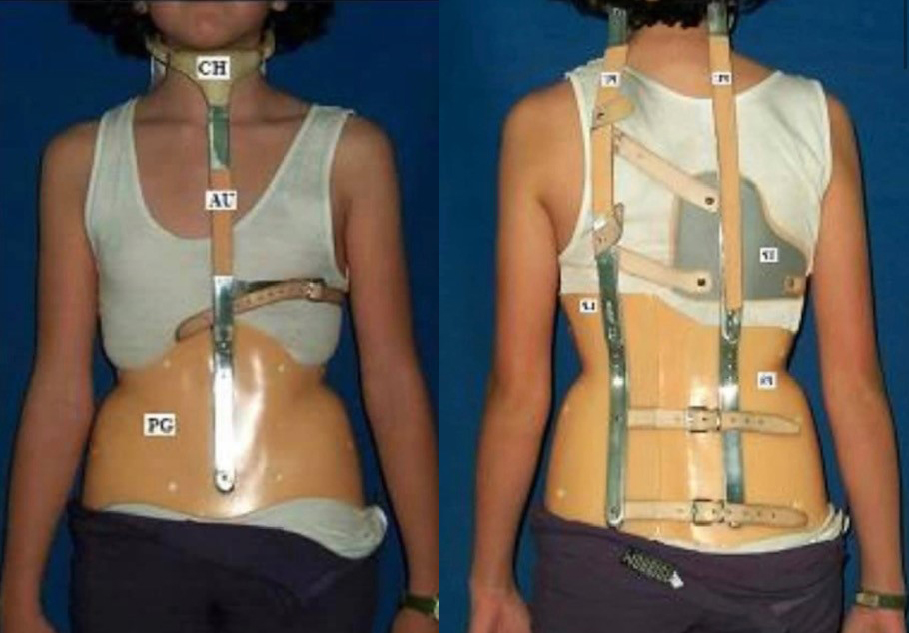
An example of Karen’s scoliosis brace.
Even though the brace was gone, I still had a curve and was in chronic pain, which I learned to live with.
But as I got older, I would notice my midsection shrinking to the point that if I bent to the side, my ribs and hip bones were almost touching. By the time I was in my 50s, there was virtually no space between where my bra and my belt met. I was becoming increasingly fatigued, and the activities that I Ioved, such as hiking and skiing, were no longer enjoyable. Driving was becoming more difficult, and I was taking more pain relievers. Sitting for long periods sent shooting pain down my legs.
My children recommended I go see a chiropractor. When I saw the x-rays he took, I thought I was looking at someone else’s images. When I was 18, my thoracic curve was 24 degrees. There were now three measurable curves in my spine. I burst into tears at the sight of my poor body, realizing all at once why I had been in so much pain for so long.

Dr. Zeeshan Sardar
Karen’s Surgery
Dr. Zeeshan Sarder, an orthopedic surgeon with Och Spine at NewYork-Presbyterian, corrected Karen McMahon’s scoliosis during a nine-and-a-half-hour procedure that fused her T2 to S1 vertebrae. In the multi-level spinal fusion her vertebrae were fused from the upper-back all the way down to the very bottom of her spine.
Before the surgery, Karen’s scoliosis was compressing the nerves in her lower back, says Dr. Sardar. The procedure helped restore the normal shape of her spine and make more room for these nerves.
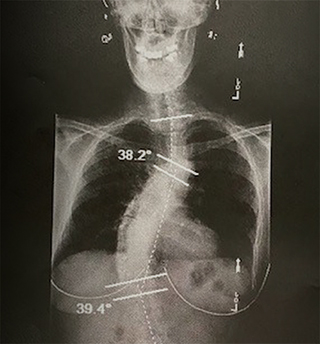
X-ray of Karen’s spine before corrective surgery.
“Someone healthy and active like Karen, I expect a good outcome and a better quality of life after her recovery,” says Dr. Sardar. “Her positive attitude and motivation to return to a high level of activity were very important for her recovery. I’m thrilled she’s back to skiing and hiking and doing the things she loves, and that she can do it all without back pain. I hope she continues to send me videos showing her progress.”
I was fearful about needing surgery because of my age. I joined some online support groups to see what other people were doing to manage their scoliosis. I eventually posted my x-rays and people responded saying my spine looked just like theirs. Some individuals that I talked with were in their 60s and had corrective surgery — and they were glad they did. This gave me real hope. I eventually talked to a friend who had lower spine surgery years earlier, and she said she had gone to what is now Och Spine at NewYork-Presbyterian. I met with an Och Spine doctor and asked him, if he were in my position, who he would want to have do the operation. He said Dr. Zeeshan Sardar. I made an appointment, and after meeting with him and talking to my family, there was zero question that I was going to do surgery.
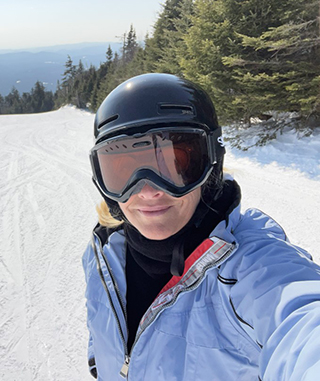
Karen on a ski slope after her surgery.
The first few months after surgery weren’t easy — my neck felt especially vulnerable and any kind of movement was painful — but at my six-month checkup, things started to turn around. I started to feel better. I started setting goals.
I took my recovery seriously. I walked every day. As soon as Dr. Sardar said I could start weightlifting, I did. I learned new core workouts and I started working with resistance bands. At one year I was ready to hike and use my kayak. I was back to lifting things over 10 pounds and riding an exercise bike.
My main goal was to live without pain. But things were going better than I ever could have imagined. I carried myself differently. I looked different. I stood straighter. A year after the surgery, people told me I looked taller. I regained over two inches in height that I had lost due to the curvature.
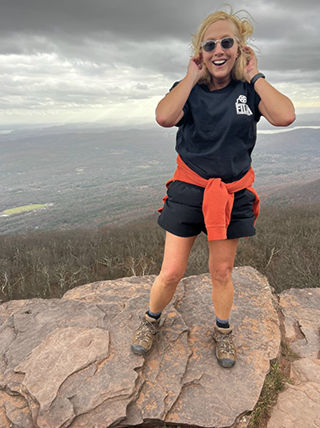
Karen hiking after her surgery.
Dr. Sardar and his colleagues freed me up to be the best version of myself. As a bonus, I now have a normal figure for the first time in my life. I am so grateful for entrusting my care to Dr. Sardar and Och Spine. Pain had defined my life. Today, I have zero pain in my back and neck. Of all the things I thought I wouldn’t be able to do after surgery, none of those things were realized. Today, my son is engaged and we are having a big destination wedding in Jamaica this winter. I am so happy that I’ll be enjoying all the fun, pain free. I can’t wait for grandchildren. When they’re old enough, I’ll be able to take them biking, tent camping, hiking, and of course, skiing. I have a lot to look forward to!
Additional Resources
To learn more about Och Spine at NewYork-Presbyterian and the wide range of operative and non-operative services they offer, please visit: nyp.org/ochspine.

